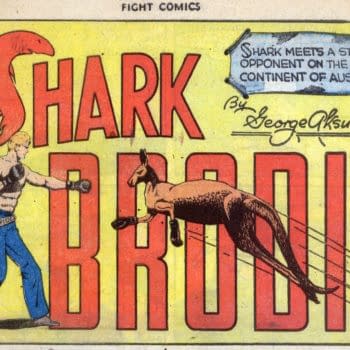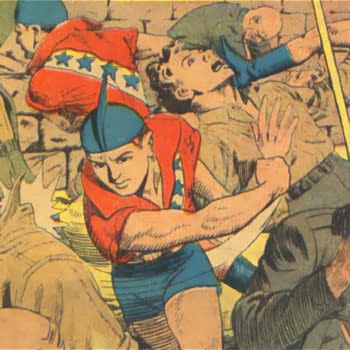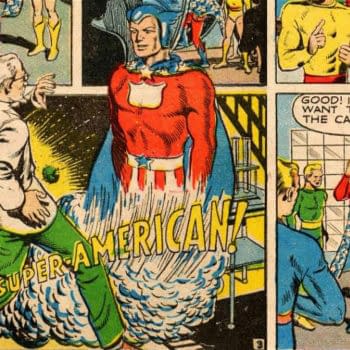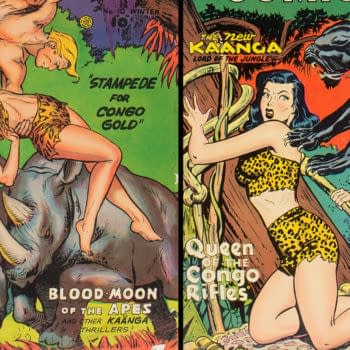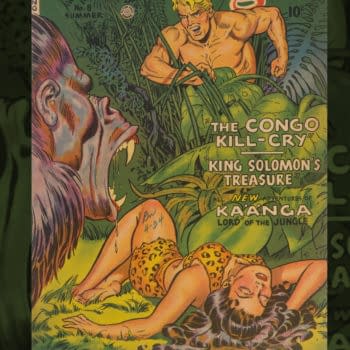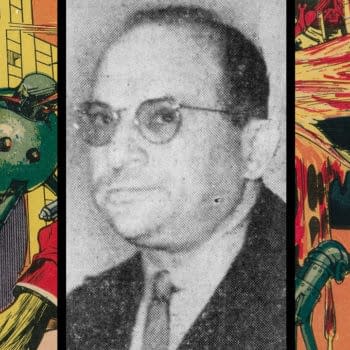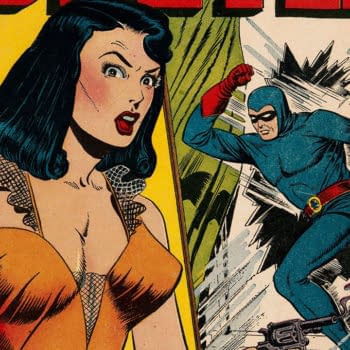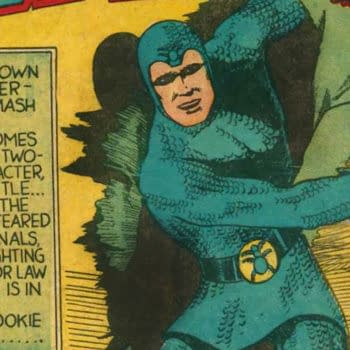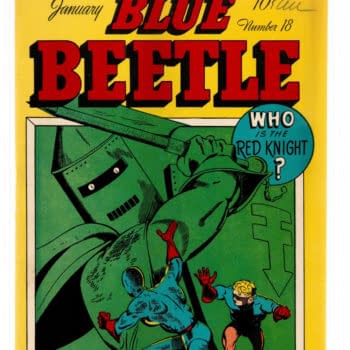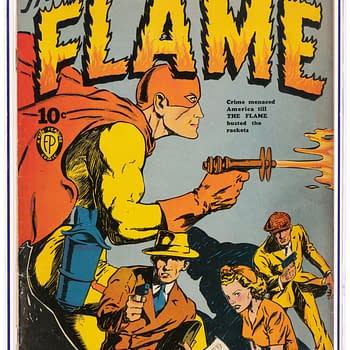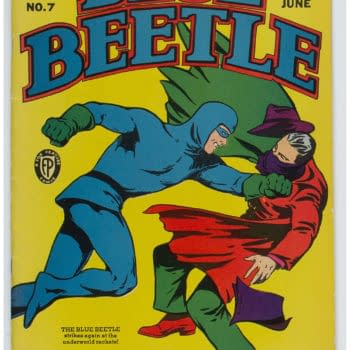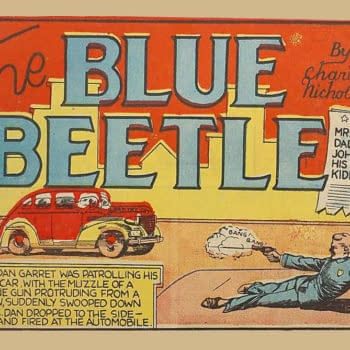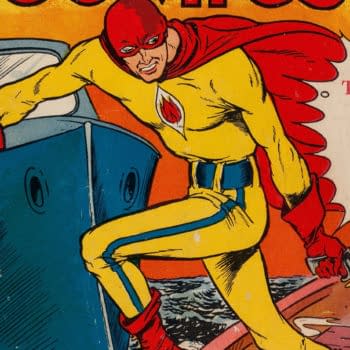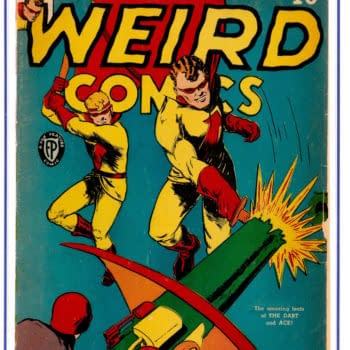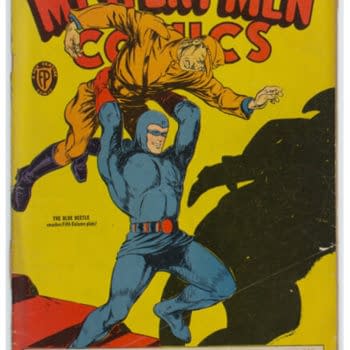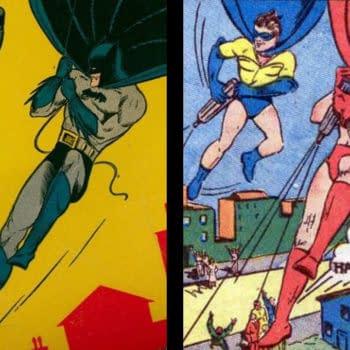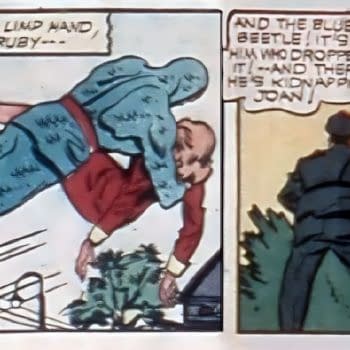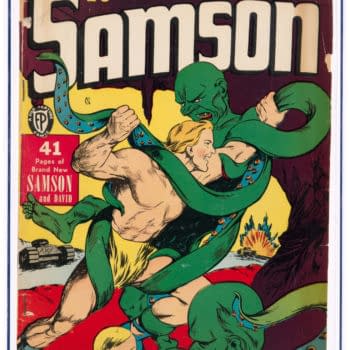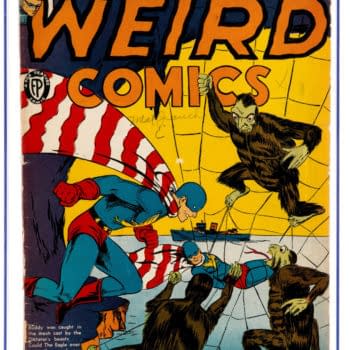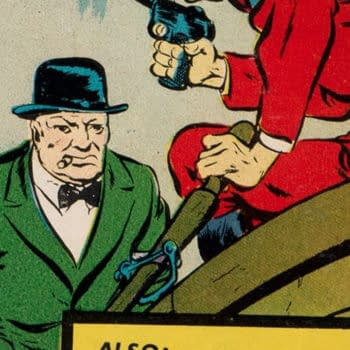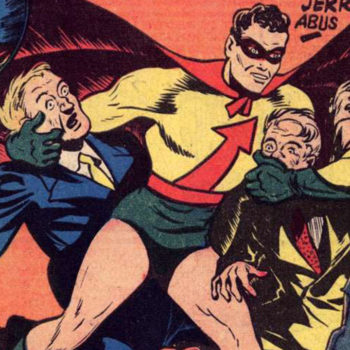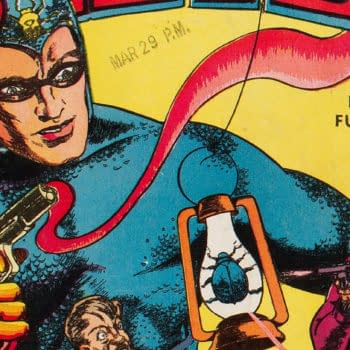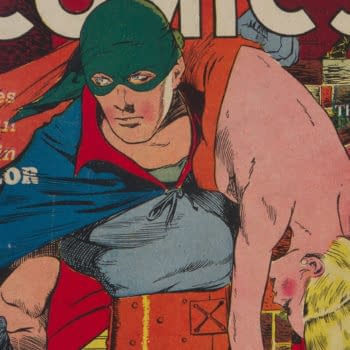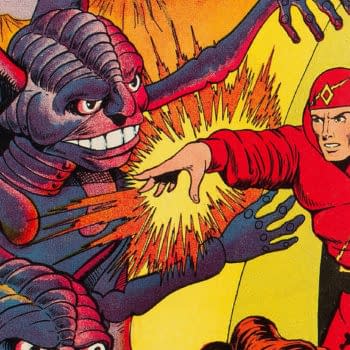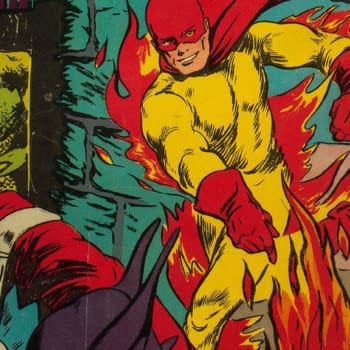George Tuska was a comic artist best known for Golden Age work, who returned to comics in the sixties to co-create Luke Cage and Moondragon.
Heritage Sponsored Archives
Fiction House's Ranger Comics launched featuring the Rangers of Freedom, a costumed hero-centric group who faced the villain SuperBrain.
Fight Comics #15 introduces its fictional patriotic superhero Super-American with a cover blurb explaining his arrival from the future.
The tough-to-get Kaanga Comics series features some spectacular art and covers from the likes of Maurice Whitman and Jack Kamen.
Kaanga Comics #8 appears to be one of the toughest Fiction House comics in high grade, and features a spectacular cover by Maurice Whitman.
The early Golden Age era of Fox Feature Syndicate includes a large number of surprisingly rare comic books.
Shortly after the Jack Kamen era of Blue Beetle began in 1947, the title showed up on comic book ban lists in cities around the country.
Fox Feature Syndicate's Green Mask was in reality rebooted into three vastly different characters from 1939-1946.
After his debut in Mystery Men Comics #1, Blue Beetle finally gets his origin moment in his series debut in Blue Beetle #1.
Blue Beetle #18 published by Fox in 1943 features the Golden Age version, who gained a little more attention due to the recent movie.
Blue Beetle arrives too late to save this person on the train tracks on the cover for Mystery Men Comics #14, and DC Comics hated this issue.
A combination of superheroics, super-science and horror makes Fox Features Syndicate's The Flame one of the publisher's best characters.
The new Blue Beetle movie has very little to do with the original Blue Beetle character published by Fox Comics in the thirties and forties.
Mystery Men Comics #1 featuring the debut of the Blue Beetle remains one of the most overlooked yet important Golden Age comic book keys.
The legendary Will Eisner liked calling characters "The Flame", and his best-known character of that name debuted in Wonderworld Comics #3.
One of the cornerstones of Fox Feature Syndicate's Golden Age superhero line, The Flame finally reached his potential in The Flame #4 in 1941
A regular cover-feature of Fox Feature Syndicate's Weird Comics, the Dart has his origin in the pre-Roman Empire era of Sulla.
Blue Beetle gets one of his most heroic looking golden age covers for Mystery Men Comics #24, taking bids at Heritage Auctions.
After successfully suing Victor Fox over Superman similarities, DC Comics did it again over copying Batman & Robin in Mystery Men Comics.
Big 3 was a Fox anthology inspired by DC's New York World's Fair 1940, this issue featuring Blue Beetle by Robert Kanigher and Al Carreno.
In Fox Feature Syndicate's Mystery Men Comics #28, Blue Beetle was shown using the power of flight throughout his adventure that issue.
Samson wraps up his 1940-1941 Fox Feature Syndicate series with a typically wild cover and WWII-era interior stories as well.
Weird Comics #18 features one of the strangest and fun covers from a golden age book, featuring the Eagle and his sidekick Buddy.
Wonderworld Comics #22 features the Flame, Black Lion and much more in a classic WWII-era issue from Fox Feature Syndicate.
Weird Comics #20 may be the first appearance of Sir Winston Churchill in an action scene on the cover of an American comic book.
Weird Comics #5 from Fox Feature Syndicate saw the debut of a weird character indeed. The Dart has his origin in the Roman era of Sulla.
After launching in 1939, 1940 became Blue Beetle's year. He received a newspaper strip, radio show, his own series -- and an origin.
With covers and art by Lou Fine, Joe Simon, Bob Powell and many others, Mystery Men Comics is one of the stand-out series of its era.
Victor Fox's important early Golden Age title Science Comics chronicles how Timely/Marvel beat him to the name Electro.
After his debut in Wonderworld Comics #3, Fox Feature Syndicate's The Flame evolved dramatically during the course of his own series.


